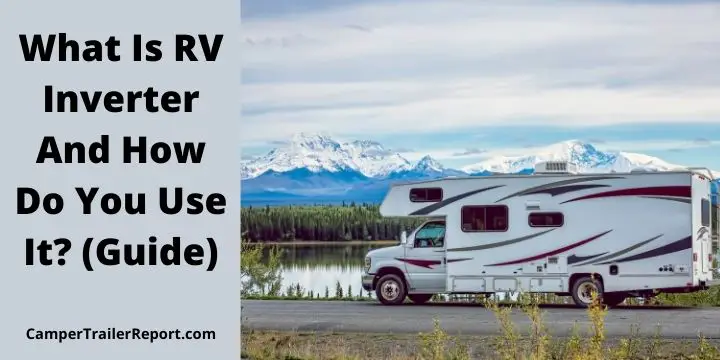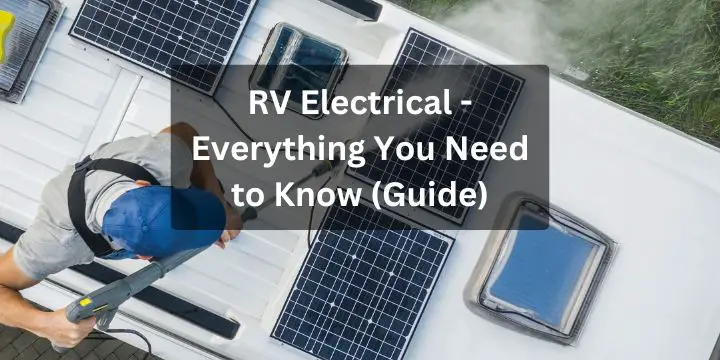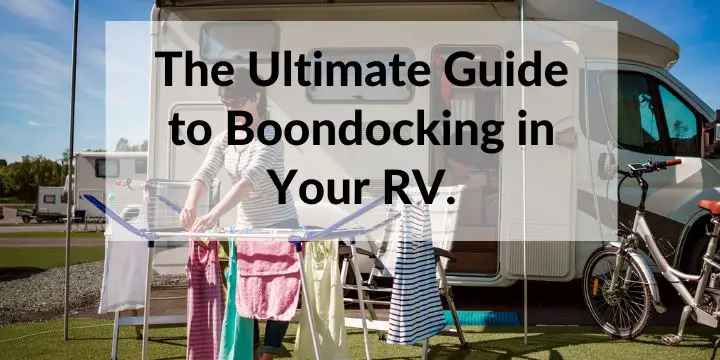
It may have come to your attention that the 120v wall outlets in your RV are only functional when you are using a generator or when you have plugged them into shore power.
These may possibly include your television set and the microwave. This tells you that your RV does not feature an inverter. This article will answer the frequently asked question, What Is RV Inverter and How Do You Use It? As well as a few other details regarding an RV converter.
What is an RV inverter?
An inverter refers to an electronic module that provides the ability to power devices that usually require 120VAC power.
It is significantly convenient for you to have an inverter and wish to camp off the power grid but still want to enjoy the convenience of your electronic devices such as the TV or phone chargers. Mid, as well as high-end RVs, normally come with pre-installed inverters. These inverters are beneficial for a few devices or probably all the RV outlets.
Fortunately, if your RV does not come with an inverter, you can still install one. However, it is critical to have in mind that adding an inverter to your RV is a significant change to the functioning of your 120VAC system. This is often not a plug ‘n’ play upgrade.
>> You may also like:45 RV Accessory Must-Haves for Your Travel Trailer<<
How does an RV inverter work?
The inverter uses your RV’s 12V batteries for power supply and converts the battery’s 120VDC into 120VAC power for all the outlets.
Theoretically, you can power anything if you have an inverter that is big enough, even the RV’s air conditioner. However, an inverter cannot give out more power than the battery bank supplying it.
According to the laws of electricity, the increasing power output from 12v to 120v concurrently causes ten times to increase in the input current. Additionally, an inverter causes an approximate power loss of 10 percent.
As a general principle, the inverter will draw approximately 10 percent more battery current on top of the actual current required by the conversion. This is known as the inverter’s efficiency and is typically between 90 to 95 percent.
Since a standard RV battery can only supply between 50 to 50 amperes per hour, you can notice your batteries draining too quickly if you try doing too much. The weight, space, and cost required for a larger battery bank are restrictive for most RV owners. For purposes of convenience, you may want to limit the number of things you would expect to power.
Video Overview: RV EXPERT EXPLAINS INVERTERS AND COMMON INVERTER PROBLEMS
How to go about getting an inverter
There is plenty of planning and decision-making to do prior to purchasing an RV inverter. Among the efforts you have to do beforehand is determining what you expect your RV inverter to power, as well as approximating the inverter capacity you will need to achieve that.
Another critical decision is how to incorporate the inverter into the preexisting system and whether the inverter will be a replacement or add-on for the present charger or converter.
The above-mentioned decisions will affect the cost as well as effort for the upgrade.
>> You may also like: Worst 5th Wheel Brands to Avoid <<
What to look for in an inverter?
Power rating and wattage
If you expect to power anything with an inverter, you will need the right power capacity for this purpose. There are various energy factors as far as an inverter is concerned, such as energy output levels, its standard power operation, and its general power rating. To make an accurate choice of a product capable of supporting your appliances when you are off the grid, you have to understand your power requirements first.
Input and output voltage
For everything to operate according to your plan, you must have the right input and output voltage. Ensure that the input voltage matches your RV’s battery.
Energy efficiency
The more efficient your inverter is, the better its operation.
Types of inverters
There are three types of RV inverters
Sine wave inverter
This kind of inverter allows for most types of appliances to operate on them, including high-power appliances such as a microwave. However, they are the costliest among the three types as a result of their high capacity.
Modified sine wave
They are almost similar to sine wave inverters but less expensive and still allow for high-energy devices to operate.
Square wave
This is the cheapest inverter alternative available. However, they can only run simple AC devices.
Video Overview: How to Select the Best Inverter for an RV
Conclusion
An RV inverter may not appeal to every RV owner. However, it can provide an alternative for staying off the grid you are camping.
>> You may also like: 25 Best National Parks in the USA <<


